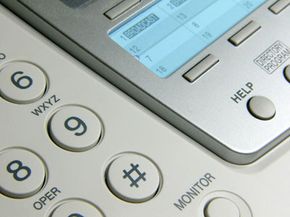In 1994, the U.S. federal government passed a law severely restricting the legality of unsolicited broadcast faxes. According to Title 47 of the U.S. Code of Federal Regulations, "It shall be unlawful for any person within the United States to use any telephone facsimile machine, computer, or other device to send an unsolicited advertisement to a telephone facsimile machine" [source: Broadcast Fax and Junk Mail Illegal]. According to Title 47, each recipient of a so-called "junk fax" could collect $500 in damages from the offending company.
The law was amended with the passing of the Junk Fax Prevention Act of 2005. Under this new law, unsolicited faxes can be sent to businesses with which the client has an "established business relationship" or EBR [source: Federal Communications Commission].
An EBR is defined by the Federal Communications Commission as "a prior or existing relationship formed by a voluntary two-way communication between a person or entity and a business or residential subscriber with or without an exchange of consideration [payment], on the basis of an inquiry, application, purchase or transaction by the business or residential subscriber regarding products or services offered by such person or entity, which relationship has not been previously terminated by either party" [source: Federal Communications Commission].
That's a fancy way of saying that it doesn't take much to establish a business relationship. No money has to change hands. Simply by inquiring about a product at a Web site or applying to a job is enough to establish a relationship between an individual and a company.
Likewise, the FCC establishes some ground rules for obtaining fax numbers from companies and individuals with whom you have an EBR:
- You can get it from the company or individual directly
- Look it up on their Web site
- Obtain it through third-party lists, as long as it's clear that the company or individual consented to be on the list
[source: Federal Communications Commission]
Another rule established by the Junk Fax Prevention Act of 2005 is that all unsolicited fax advertisements must include clear instructions for opting out of all future broadcast faxes from that company. The opt-out process must be free (by toll-free phone number, toll-free fax or Web site) and must be listed on the first page of the fax. To opt out, all a consumer has to do is provide his fax number to the company directly by any of the methods listed above [source: Federal Communications Commission].
The broadcast fax industry has been hit hard by several multi-million-dollar lawsuits. This has scared many companies away from using broadcast fax, causing a steep decline in broadcast fax spending over the past couple of years.
In 2005, companies spent $240 million on broadcast fax worldwide. In 2006, that number was down 16.7 percent to $200 million. By 2010, experts predict that broadcast fax spending will be down to $110 million.
For more information about broadcast fax and related topics, check out the links on the next page.




